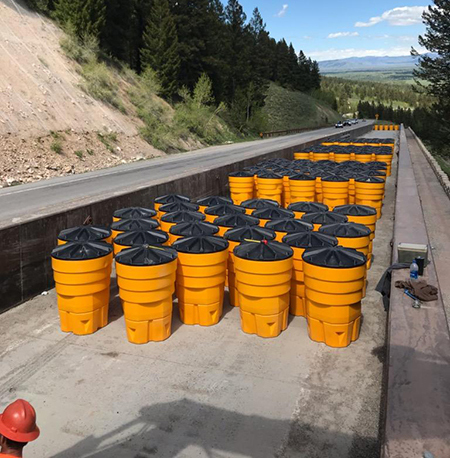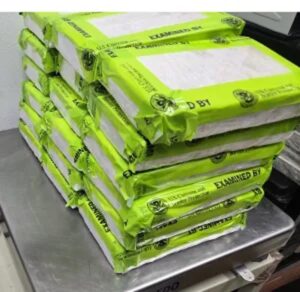JACKSON, Wyo. — The Wyoming Department of Transportation (WYDOT) has established a temporary system of safety barrels to prevent runaway trucks and other vehicles from going off the side of a high mountain road.
The transportation department set up the “sand-barrel array” on Highway 22 in the Teton Pass near Jackson, The Jackson Hole News & Guide reported June 22.
“We are counting on this front part to stop you,” WYDOT maintenance foreman Bruce Daigle said in the News & Guide article. “As you enter the arrestor you will have 11 rows of barrels. They try to get you slowed so it stops you easier.”
A “catchnet” system previously used in the pass has been out of service since September 2019 when a truck hauling logs sailed through without stopping until reaching the last of several nets.
The containers filled with various levels of a soft sand material, are meant to slow and eventually stop an out-of-control vehicle and can be replaced after an accident. The system, known as a sand-barrel array, cost about $75,000 and will be used until the department can finalize a permanent solution.
Teton Pass is one of the shortest highway stretches in Wyoming; yet it is one of the most costly for the transportation department to maintain because of its rugged terrain, severe weather and high volume of traffic.
WYDOT recently opened Teton Pass to trailer traffic under 60,000 pounds gross vehicle weight (GVW). WYDOT also lowered the maximum speed limit on the pass and closed the parking area at the top of the pass, repurposing the site as a mandatory brake-check area for vehicles. The maximum posted speed on Highway 22 Teton Pass will be reduced from 55 mph to 45 mph for trucks. WYDOT will use dynamic message signs to notify drivers of the brake inspection station at the Teton Pass Summit pullout. These additional restrictions are still in place in conjunction with the active “sand-barrel array” system. Parking will be actively restricted until the catch-net arrestor system is functional again.
Currently there is only one escape ramp open on the Teton Pass, located at milepost 8.2, about a mile above the current closed vehicle arrestor.
The Wyoming Highway Patrol has increased patrols in the area, and the Weigh-in-Motion system (WIM) on Teton Pass will continue to notify authorities when vehicles exceed the 60,000-pound restriction.
The Associated Press contributed to this story.
The Trucker News Staff produces engaging content for not only TheTrucker.com, but also The Trucker Newspaper, which has been serving the trucking industry for more than 30 years. With a focus on drivers, the Trucker News Staff aims to provide relevant, objective content pertaining to the trucking segment of the transportation industry. The Trucker News Staff is based in Little Rock, Arkansas.














